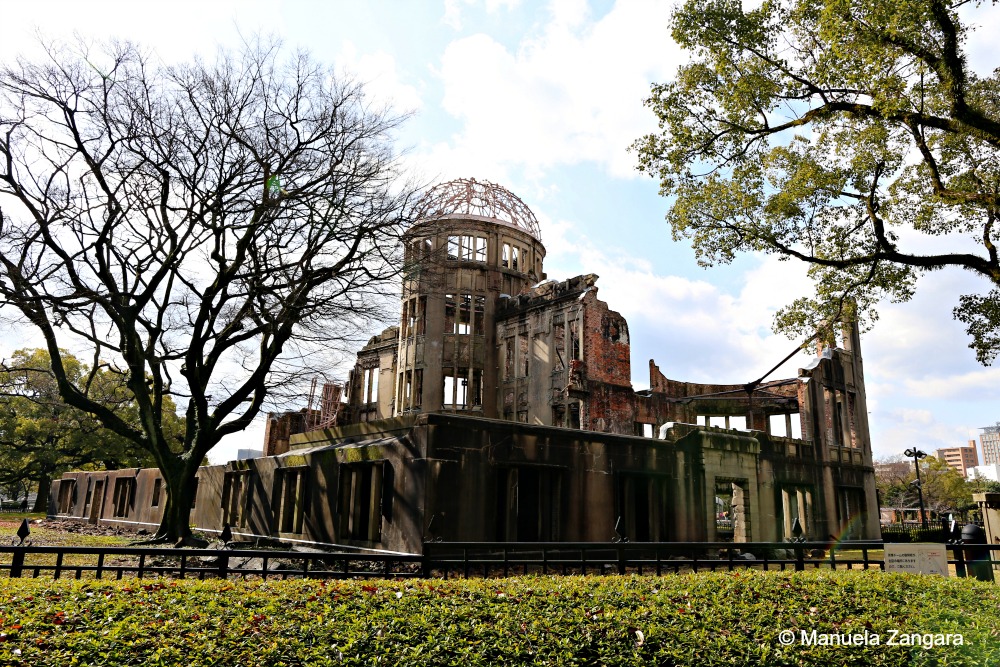
During our recent trip to Japan, we also visited Hiroshima. We had already been there in 2015, so we could have easily skipped it this time around. I know many people go to Japan and don’t feel the need to visit. We, however, just had to be back. We were in Miyajima after all and we had to stop at Hiroshima station to reach the island anyway. But it wasn’t just that. In 2015 our daughters were 7 and 5 years old and while the eldest one clearly remembered our visit, the youngest one didn’t have clear memories and we thought it was extremely important to take the kids back so that they never forget what happened in Hiroshima in 1945!
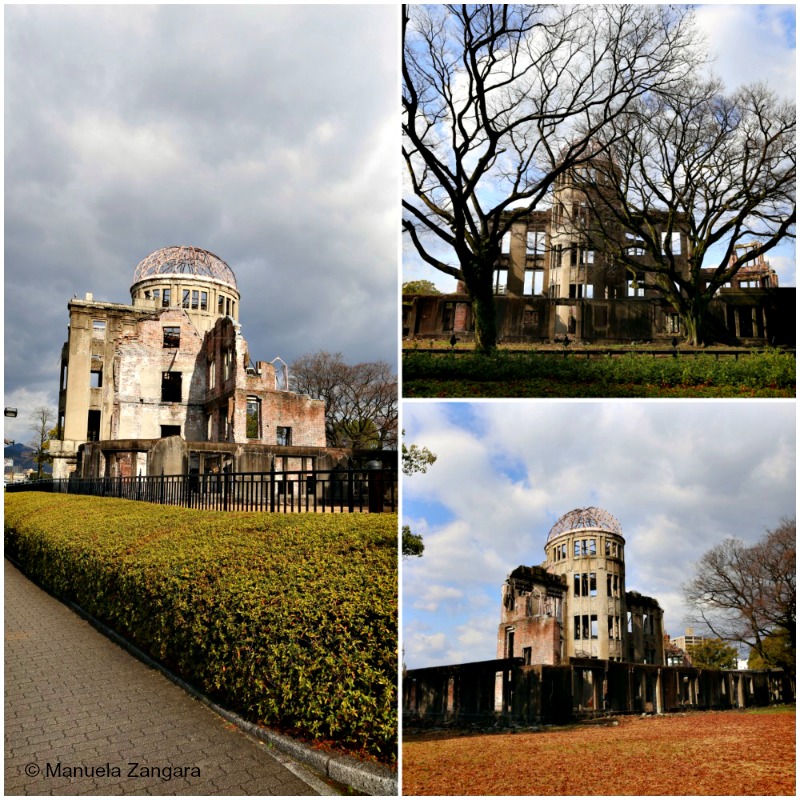
The majority of you may not know that I have a Political Science degree, with a major in International History… I was particularly interested in visiting a place that has become the symbol of the atrocities that wars can cause to innocent people. However, whether you like history or not, I highly recommend a visit to Hiroshima. It’s actually a very vibrant city, full of life.

SIGHTSEEING
Once again, we did not have a lot of time to dedicate to the visit, so we decided to just see the Peace Memorial Park and Museum. We arrived to Hiroshima Station from Miyajima and had to go to Kurashiki later on, so we left our luggage in the coin lockers at the station and took the free bus to the Peace Memorial area.
We got down in front of the Museum, and that’s where we started our visit from.

At the entrance there is a clock that shows how much time has passed from the bombing and how much time has passed from the last nuclear test!

The Museum is very touching and quite a “punch in the stomach”. Here is what the first lines of the Museum’s leaflet say: “At 8:15 AM of on August 6, 1945, the city of Hiroshima fell victim to the world’s first atomic bombing. The entire city was virtually levelled; thousands upon thousands of lives were lost. Many of those who managed to survive suffered irreparable physical and psychological damage and still suffer the effects today.”
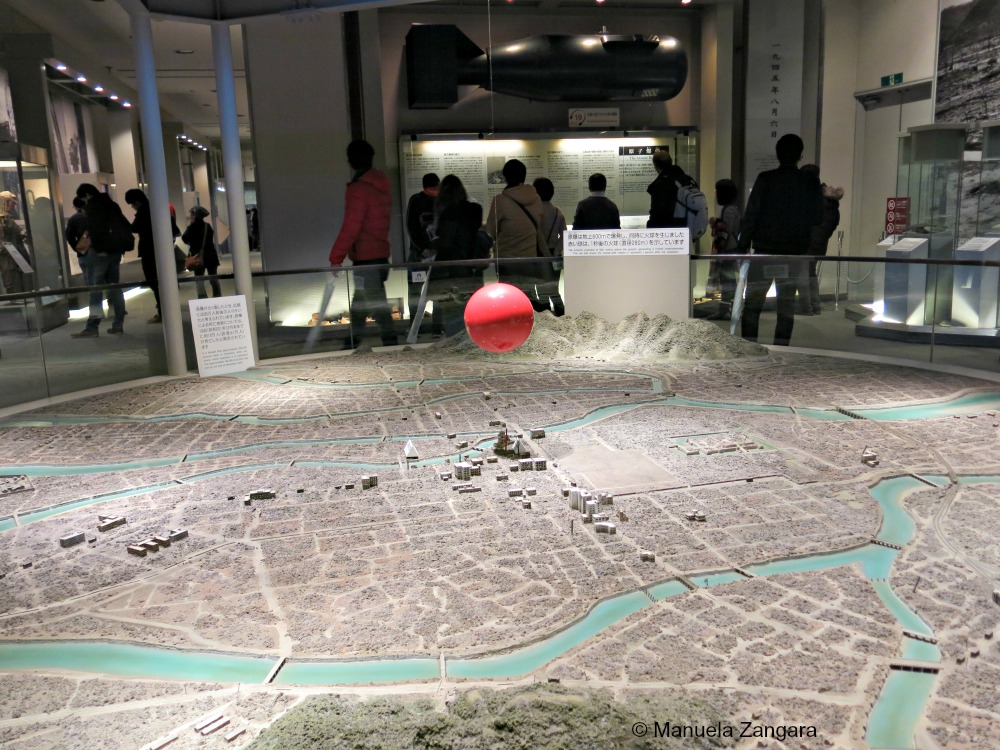
And then again on the atomic bomb: “When the bomb exploded, fierce heat rays and radiation burst out in every direction, expanding the air around the fireball and creating a super-high-pressure blast […] The intense heat rays and blast crushed and burned nearly all the buildings within 2 kilometers of the hypocentre. By the end of December 1945, when the acute effects of radiation had subsided, the bomb had taken approximately 140,000 precious lives.” And that, out of a population of approximately 350,000 people!

This time, we did not rent audio guides, as we could still clearly remember the explanations, as they were really heartbreaking and mostly about children. Look at this burnt tricycle. It belonged to a 3 year old child who died.

There were lots of burnt clothes and you can easily imagine the state of the people wearing them.


You could also see plenty of melted ceramic and glass objects… even coins.

There was even a shadow hatched on a wall!

And black rain…

And just look at these train tracks!
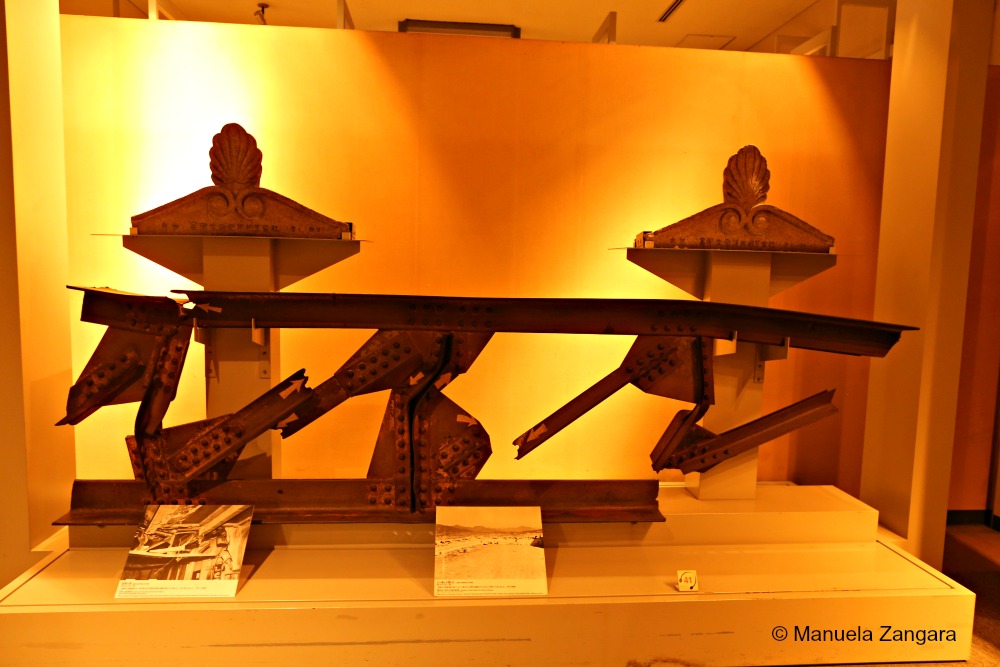
And this… roof.

You were allowed to touch a few objects to better understand the destructive power of the atomic bomb. This was very good to get the kids involved.

There were explanations of what happened that day, but also of the long term effects of the bomb on the population. So many innocent people died for years because of the radiations. What always impresses me is the spirit of the Museum. There is no hatred or anger. Everything is showed and explained so that a similar tragedy doesn’t happen again. Just to make people “think”. Everyone should visit!
What surprised me when I looked back at the photos we took in 2015 and compared them with the ones of 2017 was to see that they were almost the same. I guess we were moved by exactly the same things. We hadn’t “gotten used” to any of it.
Our kids were both involved and I know they will never forget.

On our way out we put stamps on our diary.

And signed the visitor’s book… again.
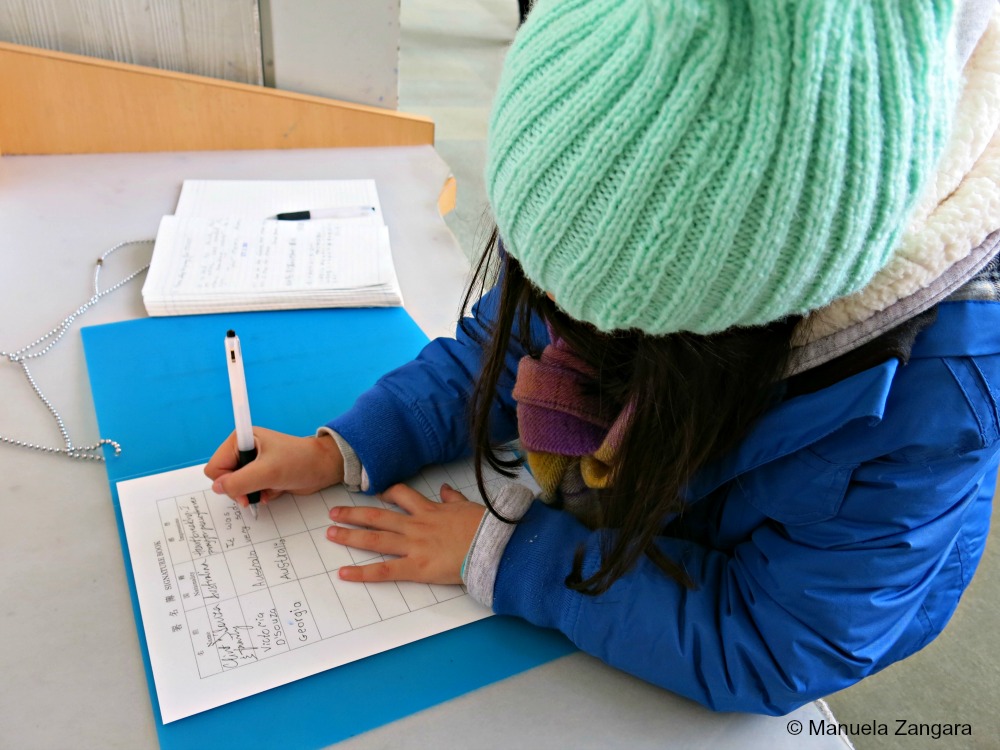
We also saw the message and the paper crane left by President Obama when he visited for the 70th Anniversary of the bombing.

After visiting the Museum, we made our way to the opposite side of the island to catch the tram back to the station.

To do so, we walked through the Peace Memorial Park stopping by at the Memorial Cenotaph which contains the register of all who have died as a result of exposure to the atomic bomb. It now lists more than 180,000 people. Through its arch you can see the Flame of Peace and the A-Bomb Dome.

The Flame of Peace will burn until all nuclear weapons are removed from the Earth.

The Children’s Memorial is one of the most touching monuments of all. It’s filled with paper cranes in memory of Sadako, a 12 year old girl who died of leukaemia a few years after the bombing. She folded over 1,000 cranes during her illness as she believed she could get cured by doing so.
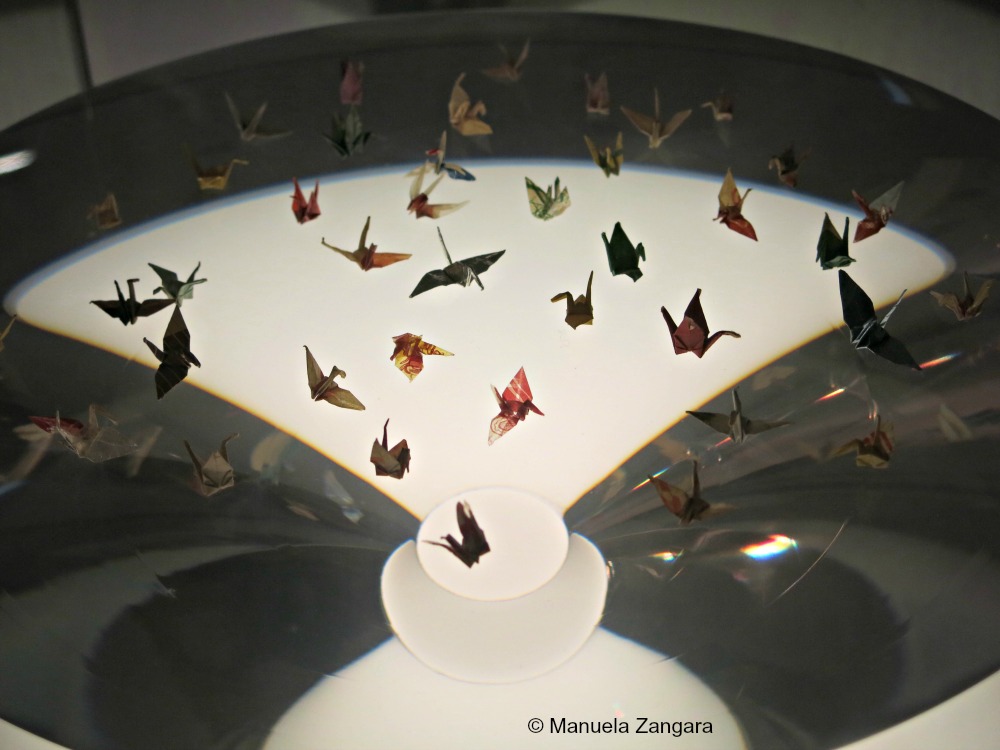
In fact, a Japanese legend promises that anyone who folds a thousand origami cranes will be granted a wish. She has since become the symbol of what the bomb did to a generation of children.

Nowadays, the folding of paper cranes has become a symbol for a wish for Peace and a world free of nuclear weapons.

We also saw the Memorial Tower to the Mobilised Students.

We didn’t see the rest of the monuments, as we had already done so in 2015, but feel free to read my older post if you are interested.

The last thing we saw before boarding the tram back to the station was the A-Bombe Dome (Genbaku Dōmu), the only building that remained standing after the bomb exploded. It is actually the hypocentre of the bombing. When we had visited in 2015, it was being restored, but this time we could finally see it without scaffolding.

I know that, to many, this seems like it happened a long time ago. The reality is that there are still over 50,000 survivors who live between Hiroshima and Nagasaki (the city where the second atomic bomb was dropped a few days later)! 50,000 people who have witnessed that horror.


While the atmosphere inside the Museum is quite sombre, the areas around it (even inside the Memorial Park itself!) were quite lively. Life really does go on.
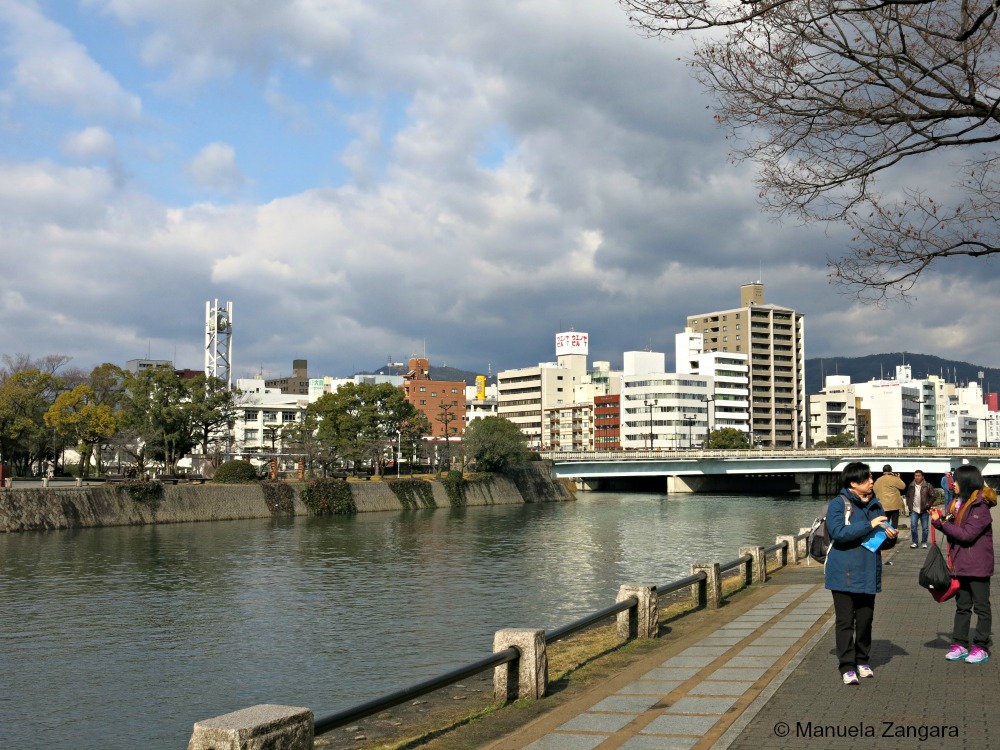

If you are ever in Japan, I highly recommend a visit to Hiroshima. It is only 1 and a half hour by train from Osaka/Kyoto. When you leave the place you will surely be sad and overwhelmed, but you will also feel richer and filled with hope for a better world. It is a MUST see.
HOURS AND FEES
Hiroshima Peace Memorial Museum Hours
8:30 to 18:00 (until 19:00 in August and until 17:00 from December to February).
Admission ends 30 minutes before closing time.
Closed December 30th and 31st.
Fees 200 yen.

RESOURCES ON MSM
RECIPES:
TRAVEL IN JAPAN:
Nara & Fushimi Inari guide – Japan
Haru Cooking Class Kyoto – Japan Guide
Nagashima and Nabana no Sato – Japan Guide
Miyajima 2017 – Japan Guide

HOW TO GET THERE
You can easily reach Hiroshima by Shinkansen. It takes about 1.5 hours from Osaka/Kyoto and about 5 hours from Tokyo (with a change in Shin-Osaka).
To go to the Peace Memorial Park, from Hiroshima Station, take the free bus (maple line) or the tram line 2 or 6 to Genbaku-Domu Mae (原爆ドーム前) station. The ride takes 15 minutes.




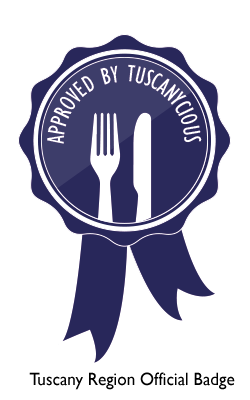












Leave a Reply